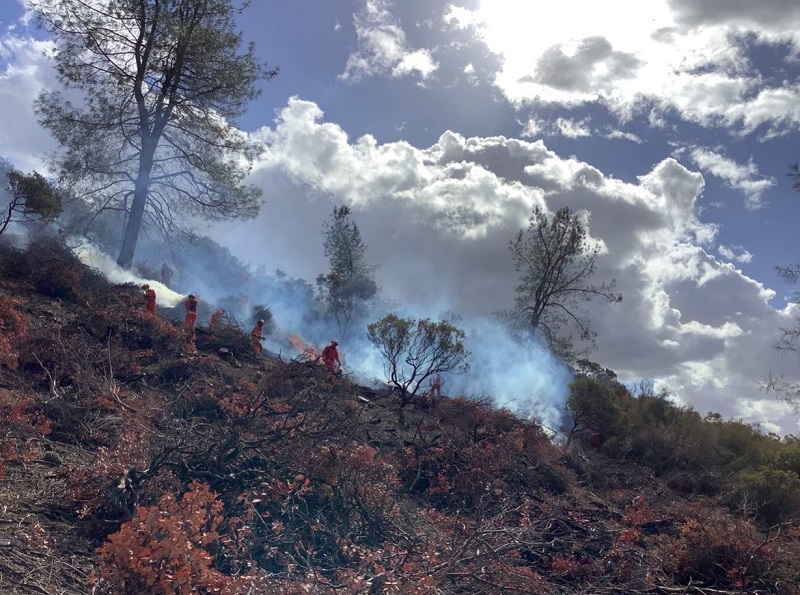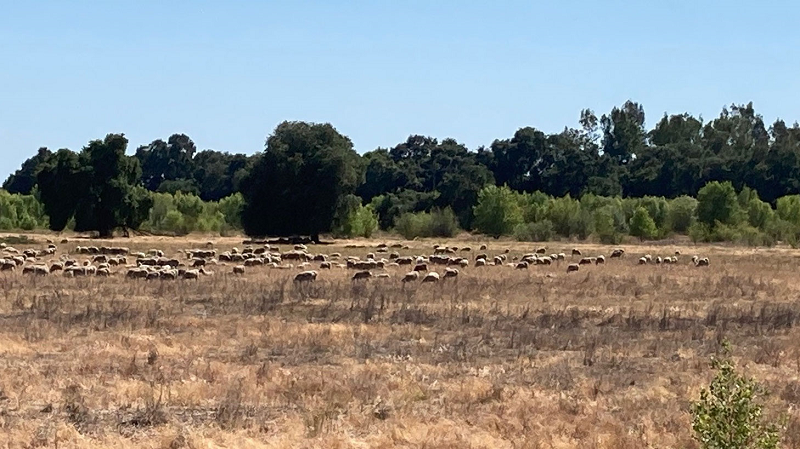Program Overview
High-severity wildfires can potentially undermine conservation of native biodiversity due to loss of native vegetation, expansion of non-native invasive species, and long-term or permanent loss of essential habitat for native fauna. The devastating effects of recent wildfires have highlighted the need for California to reevaluate wildfire risk management and direct greater efforts toward long-term wildfire resilience. In January 2021, Governor Newsom released California’s Wildfire and Forest Resilience Action Plan(opens in new tab) (Action Plan). The plan provides a framework, strategy, and specific goals that must be achieved to improve wildfire resilience and forest health throughout the state. To support the recommendations in the Action Plan, over $80 million has been directed to CDFW to increase the pace and scale of wildfire resiliency actions.
CDFW owns or administers approximately 1.1 million acres of the State’s owned and managed land. Protection and restoration of those lands help the State meet its goals related to wildfire resilience, climate resilience (30x30 California(opens in new tab)), and increased biodiversity (2018 Biodiversity Initiative (PDF)(opens in new tab)). Much of California’s native vegetation is fire-adapted, therefore replacing non-native vegetation with fire-resilient native species is an important strategy to mitigate the likelihood and impact of high severity fires. Many native species rely on habitat that was historically shaped by wildfire, thanks to management actions of Native Americans. CDFW is focused on working with partners across the landscape, including Tribes, to address challenges from extreme wildfires and to foster resilient ecosystems that creates space for fire in a way that protects and enhances California’s biodiversity.
CDFW will continue to build upon and accelerate fire resiliency work on Department lands using the M.A.R.C. (Maintenance; Adaptive Management; Restoration; Capacity) Implementation Framework.
Maintenance
As a direct result of increased funding, CDFW has invested in new and upgraded fuels management equipment and has expanded treatments to reduce the risk of wildfire and protect communities and ecosystems. Maintaining this investment in areas where wildfire risk has successfully been reduced is an important component of long-term resiliency.
Adaptive Management
Adaptive Management is an iterative decision-making framework that will be used to help direct wildfire resiliency actions on Department lands. Monitoring directly informs adaptive management decisions and is a key pillar of the M.A.R.C framework. Monitoring the effectiveness of treatments will help to inform future decision making on the siting and treatment types for new projects, and when areas need to be re-treated, to help maintain an effective reduction of the risk of catastrophic wildfire.
Restoration
Many California ecosystems are adapted to low-severity fire events, either caused by natural processes such as lightning, or intentionally set by Tribes. These low severity fires can eliminate non-native vegetative competition, rejuvenate growth, and improve watershed conditions. By restoring native vegetative communities and reintroducing natural processes, such as low intensity fire, on Department lands will help to increase resiliency across California.
Capacity
Sustaining wildfire resilient ecosystems requires a dedicated and well-trained staff to ensure long-term benefits on management investments. CDFW recognizes that achieving the desired pace and scale of treatments will require co-management with Tribes and the support of Federal and local governments, nongovernment organizations, and private contractors. CDFW is identifying opportunities for expanding partnerships with the California Conservation Corps, universities and community colleges, small businesses, and other entities in key areas to support a strong, shared workforce.
Wildfire Resiliency Projects in Action
 CDFW and CalFIRE create a fuel break at Pine Hill Ecological Reserve. Dense vegetation is trimmed, piled, and burned to reduce wildfire risk to nearby homes and increase growth success for rare plants.
CDFW and CalFIRE create a fuel break at Pine Hill Ecological Reserve. Dense vegetation is trimmed, piled, and burned to reduce wildfire risk to nearby homes and increase growth success for rare plants.
 At Cosumnes River Preserve grazing by cattle, sheep, and goats reduces wildfire risk on grasslands. Grazing sheep often favor eating invasive species which benefits native plant growth such as Valley Oak.
At Cosumnes River Preserve grazing by cattle, sheep, and goats reduces wildfire risk on grasslands. Grazing sheep often favor eating invasive species which benefits native plant growth such as Valley Oak.